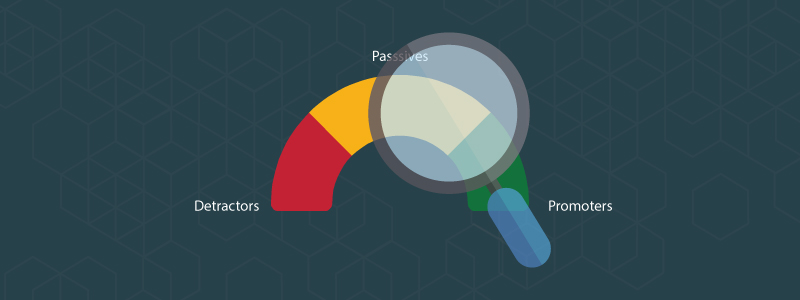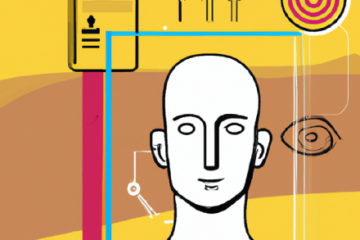It’s not what you think it is: Presenting NPS® 2.0
It’s not what you think it is: Presenting NPS® 2.0

It is probably time for a new and updated book to be written on NPS® (Net Promoter Score®). So much has changed in the external context, I find it strange that most implementations being done today, are done using old tools and techniques, with old-world practitioners waving the ‘Old book’.
The concept was first introduced in an HBR article by Frederick Reichheld, a management consultant from Bain in 2003. Even before the conceptualisation of the ‘Ultimate Question’, he had already achieved great fame as a loyalty guru through his works published as a book earlier in 1996 – ‘The Loyalty Effect’.
So when this HBR article inevitably scaled up to be an acclaimed book a couple of years later, I was very excited about the power and the simplicity of the concept, and the scalability of the implementation. To me, tired as I was with market research and methods which were only marginally better than anecdotal evidence, this was truly the future of marketing.
What I quickly realised then, was while the concept was simple, the execution was not. It was probably due to an over-simplistic interpretation of the concept – both by the author himself and dare I say, consultants from Bain. It was worsened by the army of market researchers who had no idea whether they should battle this revolution storming their gates, or embrace it by offering their own versions. Not entirely their fault! And I’ll come to that soon.
 You could easily find flaws in the current reliance on sample-based information – done typically as an intervention, once a year or through a delayed ‘transactional’ basis through telecalling. Our NPS® implementations often painted a clear picture of outcomes and gaps –mired in data issues and delayed insights, in most cases. And in summary, it was turning out to be quite like market research – only with a more harmful obsession of a ‘Single Number’. No matter how skewed, data is gold! It was still valuable – but not quite elegant or simple as I imagined it to be.
You could easily find flaws in the current reliance on sample-based information – done typically as an intervention, once a year or through a delayed ‘transactional’ basis through telecalling. Our NPS® implementations often painted a clear picture of outcomes and gaps –mired in data issues and delayed insights, in most cases. And in summary, it was turning out to be quite like market research – only with a more harmful obsession of a ‘Single Number’. No matter how skewed, data is gold! It was still valuable – but not quite elegant or simple as I imagined it to be.
The missing bridge in all our minds was technology. Bear in mind, the book (and its follow up version) were written before smartphones took over our lives.
3 things have majorly revolutionised the NPS® context in the past decade:
- Smartphone in everyone’s hands.
- Social media has taught all of us to be contributors and active participants.
- SaaS and Cloud have revolutionized enterprise tech.
Now visualise the old concept of NPS® through a new lens. You would realise that NPS® as a concept was just ahead of its time – poorly implemented because the stakeholders were not ready with the right tools.
I find so many sub-optimal implementations of NPS® across large organisations – with tools driven from an earlier era. Over the past year at LitmusWorld, we have done over 600 programs across clients with over 21 million ratings and reviews. This has helped us drive great insights into how consumers react and interact with brands. So here’s a quick checklist of how NPS® should be implemented in 2019:
1. Start when your leaders are ready
NPS® should be a transformational programme – not an incremental measurement exercise. Therefore, make sure your business leaders are strong endorsers, if not sponsors. Anything less is a waste of time.
2. Conversations, not surveys
Keep your questions short and responsive, not a standard script. Keep it short and tight – 30 seconds is the attention you can expect from your consumer. If you got 30 seconds from your consumer, what would you ask?
Don’t tell me that the book says ask one question and one open-ended section. Have some pity, the book is not dumb, it was written in an era when the call centre was central to contacting the consumer. In today’s context, you need experience attributes to be a strong component of the conversation and it has to be dynamic.
3. Prevent survey cynicism, there is no survey fatigue anyway
How many are too many? It’s a query we constantly get from clients. Actually, there is nothing called too many. Your consumers have viewpoints and are happy to share them every time you ask. They stop giving feedback when you don’t act on what they say or respond to them at the least. In our research, more than 70% of consumers say they don’t give feedback because they initially did and companies didn’t care. So, to ensure this cynicism is eradicated, companies need to acknowledge customer feedback with their interest in mind.
4. Continuous, contextual
Not just One-time – once a year or quarterly simply does not cut it anymore. Consumers are won and lost every day based on how you perform. You need to have your listening channels open across every touchpoint, every channel, all the time.
5. Continuous improvement journey, not Sharma ji ka beta
A customer experience transformation is a continuous improvement journey. It begins with a customer experience platform implementation (where active listening across channels is key and ability to act immediately through executional elements) on one hand and executive decisions on the other which are critically important. It is not a mindless benchmarking exercise, a-la the infamous ‘Sharma Ji ka beta’ malaise that Indian parents go through their inevitable comparison with neighbours and their impossible arrangements.
6. Employees first, customers second
Service-profit chain is a 25-year old management principle but is relevant and even more measurable today. Engaged employee deliver great service quality which results in loyal customers who deliver profitable revenues. Therefore start your exercise with employees. Your frontline employees probably share better tales about the customer experience than any white board in the board room can – except they need to be collated, understood and addressed.
These 6 thoughts are neither sequential nor an absolute essential but help in planning and phasing them to ensure all these ingredients are there in a full-fledged rollout.
The end-state of a great NPS® implementation is strong ROI in terms of customer upsell, cross-sell and new revenue.
The path getting you there could be overwhelming but the ride can be a great learning loop with the right platform and the tools at the centre.
By Ramesh Natarajan, COO, LitmusWorld. Ramesh is an entrepreneur and executive with 25 years of experience globally in customer management, general management, sales & marketing and research across industries. Former VP & CEO DHL Express – RoSA. Alumnus of IIT Bombay, IIFT New Delhi.

